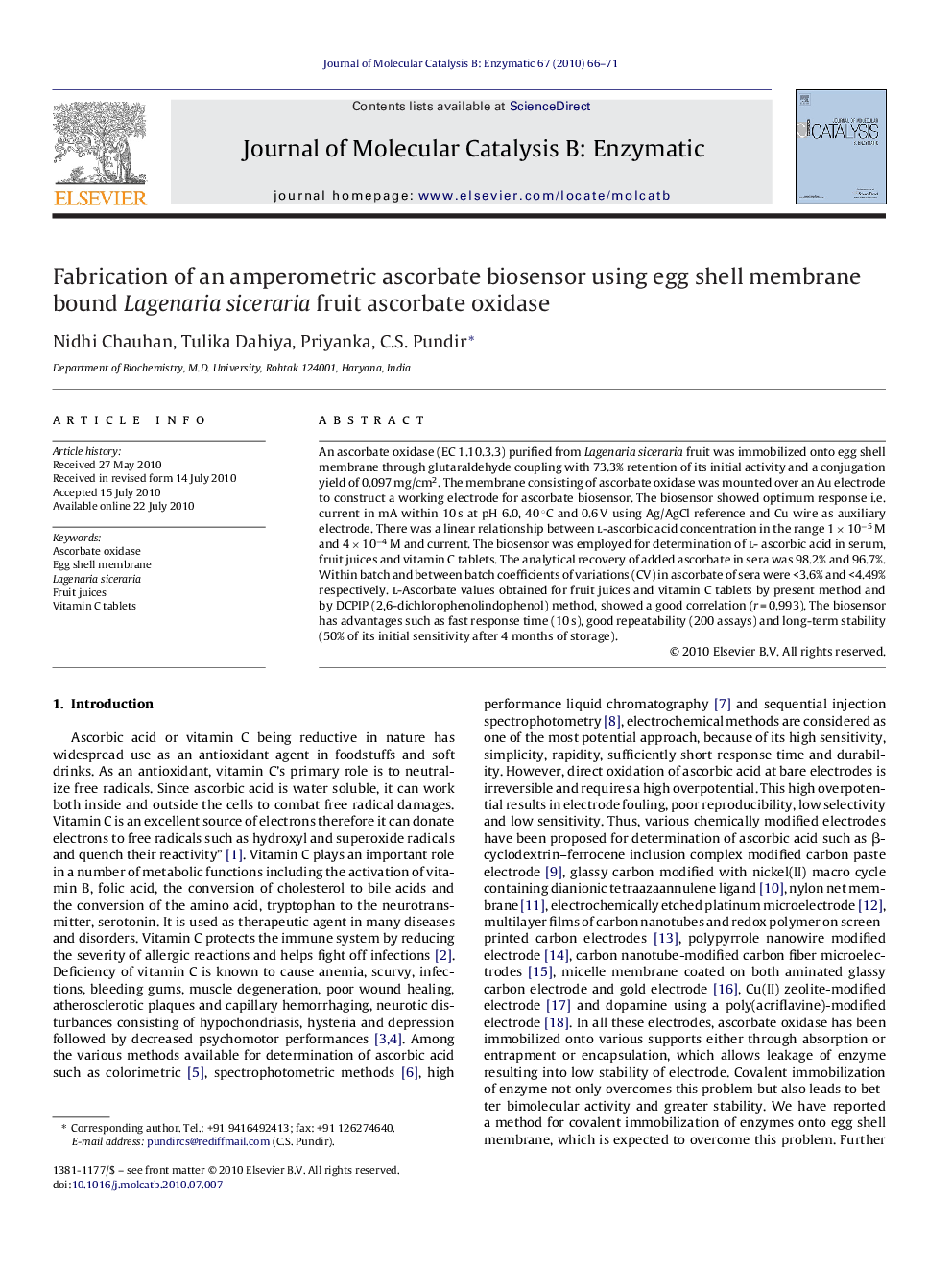| Article ID | Journal | Published Year | Pages | File Type |
|---|---|---|---|---|
| 70870 | Journal of Molecular Catalysis B: Enzymatic | 2010 | 6 Pages |
An ascorbate oxidase (EC 1.10.3.3) purified from Lagenaria siceraria fruit was immobilized onto egg shell membrane through glutaraldehyde coupling with 73.3% retention of its initial activity and a conjugation yield of 0.097 mg/cm2. The membrane consisting of ascorbate oxidase was mounted over an Au electrode to construct a working electrode for ascorbate biosensor. The biosensor showed optimum response i.e. current in mA within 10 s at pH 6.0, 40 °C and 0.6 V using Ag/AgCl reference and Cu wire as auxiliary electrode. There was a linear relationship between l-ascorbic acid concentration in the range 1 × 10−5 M and 4 × 10−4 M and current. The biosensor was employed for determination of l- ascorbic acid in serum, fruit juices and vitamin C tablets. The analytical recovery of added ascorbate in sera was 98.2% and 96.7%. Within batch and between batch coefficients of variations (CV) in ascorbate of sera were <3.6% and <4.49% respectively. l-Ascorbate values obtained for fruit juices and vitamin C tablets by present method and by DCPIP (2,6-dichlorophenolindophenol) method, showed a good correlation (r = 0.993). The biosensor has advantages such as fast response time (10 s), good repeatability (200 assays) and long-term stability (50% of its initial sensitivity after 4 months of storage).
Graphical abstractA method is described for construction of an amperometric ascorbate biosensor based on egg shell membrane bound Lagenaria siceraria fruit ascorbate oxidase mounted over Au electrode. The biosensor showed optimum response i.e. current in mA within 10 s at pH 6.0, 40 °C and 0.6 V. There was a linear relationship between l-ascorbic acid concentration in the range 1 × 10−5 M and 4 × 10−4 M and current. The biosensor was employed for determination of l-ascorbic acid in serum, fruit juices and vitamin C tablets. The biosensor has advantages such as fast response time (10 s), good repeatability (200 assays) and long-term stability (50% of its initial sensitivity after 4 months of storage).Figure optionsDownload full-size imageDownload as PowerPoint slideResearch highlights▶ Constructed an amperometric ascorbate biosensor using egg shell membrane bound ascorbate oxidase. ▶ Optimal working conditions of biosensor – 0.6 V, pH 6.0, 4 °C and 10 s. ▶ Linear working range 10−5 to 4 × 10−4 M. ▶ Measure ascorbic acid in serum, fruit juice and vitamin tablets. ▶ Advantages – Fast response, 200 reuses and 4 months stability.
